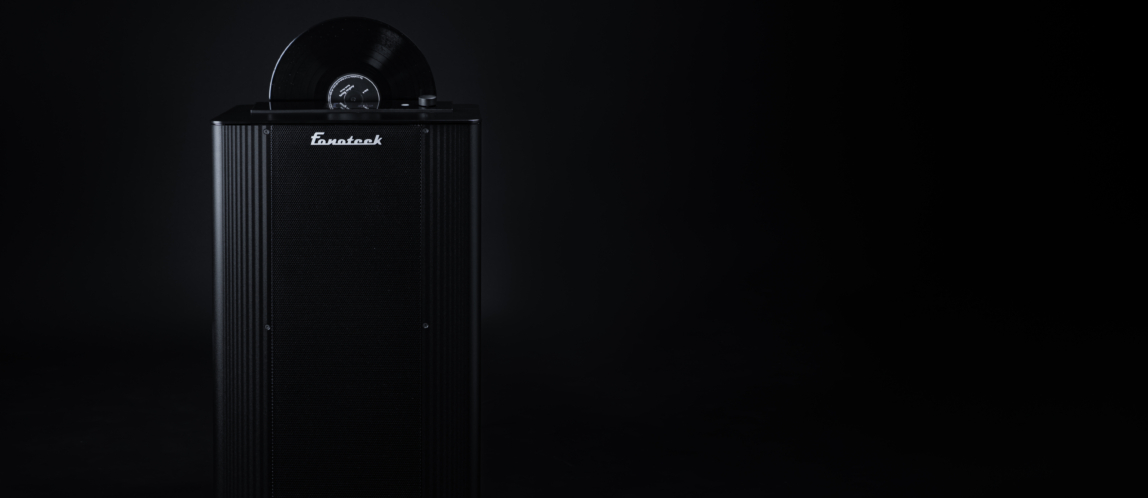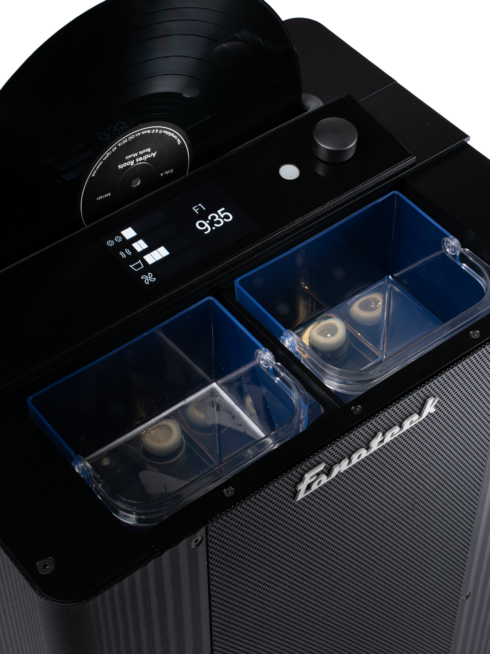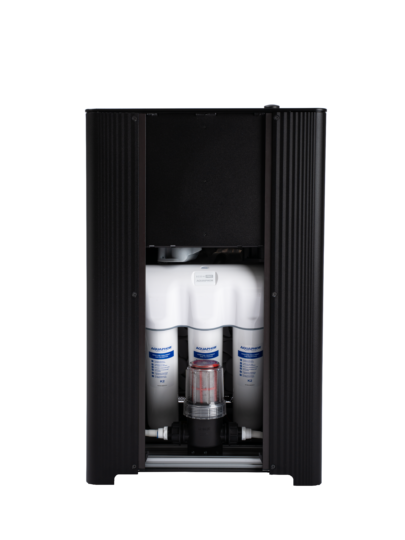
Fonoteek Unveiled: All About Rinsing
In the “Fonoteek Unveiled” series, we explore the cutting-edge features of Degritter’s Fonoteek. From the cooling system to the UI, we’ll go through all of the nitty gritty that makes this new record cleaning station tick. Our first installment focuses on its innovative rinsing mechanism that ensures your records stay impeccably clean.
Cleaning fluid is essential for achieving the cleanest results. This is why we developed our very own anti-static, easily washable Degritter Cleaning Fluid. Paired with Fonoteek’s state of the art rinsing system, you can rest assured that your cleaning fluid has been thoroughly washed off. But if you’re still not convinced, you can skip the extras and rinse your beloved records with distilled water. Here’s how the mechanism works.
Two Tanks, Superior Results
Designed for serious vinyl enthusiasts tackling large batches of records, Fonoteek features a two-tank system: one 3-liter tank for cleaning and another for rinsing. The dual-tank system is unique among ultrasonic record cleaners, allowing you to wash 50-100 records before needing a water change. For extra cleaning power, you can add Degritter Cleaning Fluid to the cleaning tank.
Next-Level Filtration
Fonoteek’s four-filter setup ensures spotless rinse water. Three activated carbon filters capture fine particles and cleaning fluid, while a mechanical pre-filter traps larger debris. This system prevents cross-contamination and keeps water fresh for every cycle.
For best results, always use distilled or deionized water. The filters, made in Estonia by Aquaphor, are easy to replace and widely available. Change them annually or after 1,000 cycles, and clean the pre-filter weekly for optimal performance.
Built for Vinyl Enthusiasts
Fonoteek’s rinsing system is designed to handle heavy use while simplifying maintenance, so you can spend less time cleaning and more time enjoying your collection.
Stay tuned for our next post, where we’ll highlight Fonoteek’s brushing technology.

